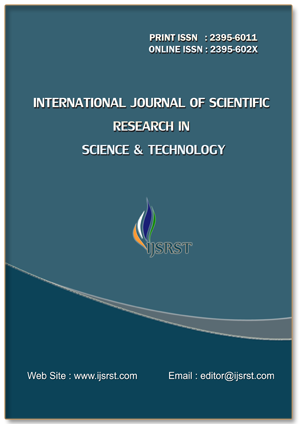Green Synthesis of Nanoparticles and Their Biomedical Applications: A Review
Keywords:
nanoparticles, green methods, biological activity, biomedical applicationsAbstract
Green synthesis, which uses plant extracts, can be used to generate metallic nanoparticles that have a lot of uses in biomedicine. This approach is not only good for the environment, but it is also cheap and long-lasting. These nanoparticles have shown promise in a number of related areas, in addition to their possible uses in regenerative medicine, immunotherapy, wound healing, tissue repair, and diagnostics. Nanoparticles synthesised by ecologically benign processes are beneficial in environmental remediation and biological sciences due to their antioxidant, antibacterial, antifungal, and antiviral properties. Green synthesis is a procedure that uses plant extracts as stabilisers and reducers to make nanoparticles that are safe for people to eat and may be used in many different ways. Researchers have discovered that nanoparticles generated by eco-friendly methods exhibit reduced toxicity and enhanced biological activity relative to those made via chemical processes. This underscores the necessity of utilising eco-friendly production techniques for nanoparticles.
Downloads
References
Benam, K. H., Gilchrist, S., Kleensang, A., Satz, A. B., Willett, C., & Zhang, Q. (2019). Exploring new technologies in biomedical research. Drug discovery today, 24(6), 1242-1247.
Haider, A., Haider, S., Han, S. S., & Kang, I. K. (2017). Recent advances in the synthesis, functionalization and biomedical applications of hydroxyapatite: a review. Rsc Advances, 7(13), 7442-7458.
Singh, J., Kaur, G., Kaur, P., Bajaj, R., & Rawat, M. (2016). A review on green synthesis and characterization of silver nanoparticles and their applications: a green nanoworld. World J. Pharm. Pharm. Sci, 6(7).
Godse, J. S., Gaikwad, S. B., Bhise, V. B., Pawar, R. P., & Ubale, S. B. (2020). Synthesis of Co3O4 Nanomaterial with Cetyltrimethylammonium Bromide Using Sol–Gel Method in Environmentally Benevolent Aqueous Media. Advanced Science, Engineering and Medicine, 12(6), 719-722. https://doi.org/10.1166/asem.2020.2579
Baker, S., Rakshith, D., Kavitha, K. S., Santosh, P., Kavitha, H. U., Rao, Y., & Satish, S. (2013). Plants: emerging as nanofactories towards facile route in synthesis of nanoparticles. BioImpacts: BI, 3(3), 111. https://doi.org/10.5681/bi.2013.012
Tadele, K. T., Abire, T. O., & Feyisa, T. Y. (2021). Green synthesized silver nanoparticles using plant extracts as promising prospect for cancer therapy: a review of recent findings. J. Nanomed, 4, 1040.
Rafique, M., Sadaf, I., Rafique, M. S., & Tahir, M. B. (2017). A review on green synthesis of silver nanoparticles and their applications. Artificial cells, nanomedicine, and biotechnology, 45(7), 1272-1291.
Han, X., Xu, K., Taratula, O., & Farsad, K. (2019). Applications of nanoparticles in biomedical imaging. Nanoscale, 11(3), 799-819. https://doi.org/10.1039/c8nr07769j
Huston, M., DeBella, M., DiBella, M., & Gupta, A. (2021). Green synthesis of nanomaterials. Nanomaterials, 11(8), 2130. https://doi.org/10.3390/nano11082130
Ali, M., Kim, B., Belfield, K. D., Norman, D., Brennan, M., & Ali, G. S. (2016). Green synthesis and characterization of silver nanoparticles using Artemisia absinthium aqueous extract—a comprehensive study. Materials Science and Engineering: C, 58, 359-365.
J. S. Godse, S. B. Gaikwad, V. B. Bhise, S. T. Gaikwad, R. P. Pawar, S. B. Ubale, synthesis and comparative study of nano zinc oxide structures with and without cetyltrimethylammonium bromide using sol-gel method, Heterocyclic Letters, 9(4) (2019) 455-460
Keskin, C., Ölçekçi, A., Baran, A., Baran, M. F., Eftekhari, A., Omarova, S., ... & Gareev, I. (2023). Green synthesis of silver nanoparticles mediated Diospyros kaki L.(Persimmon): Determination of chemical composition and evaluation of their antimicrobials and anticancer activities. Frontiers in Chemistry, 11, 1187808.
Godse, J. S., Gaikwad, S. B., Bhise, V. B., Suryawanshi, R., Ubale, S. B., & Pawar, R. P. (2022). Synthesis of Binary Manganese Cobalt Oxide (MnCo2O4) Nanomaterial in Environmentally Benign Aqueous Media. Letters in Applied NanoBioScience, 12(4). https://doi.org/10.33263/LIANBS124.157
Godse, J. S., Pawar, S. V., Gaikwad, S. B., Bhise, V. B., Dhotre, S. S., Ubale, S. B., & Pawar, R. P. (2023). Citric Acid Mediated Synthesis of Spinel Binary Copper Manganese Oxide (CuMn2O4) Nanomaterial using Sol-Gel Method. Letters in Applied NanoBioScience, 12(4). https://doi.org/10.33263/LIANBS124.180
Álvarez-Chimal, R., & Arenas-Alatorre, J. Á. (2023). Green synthesis of nanoparticles: A biological approach. In Green chemistry for environmental sustainability-prevention-assurance-sustainability (PAS) approach. IntechOpen. https://doi.org/10.5772/intechopen.1002203
Shah, M., Fawcett, D., Sharma, S., Tripathy, S. K., & Poinern, G. E. J. (2015). Green synthesis of metallic nanoparticles via biological entities. Materials, 8(11), 7278-7308.
Nadeem, M., Pervez, L., Khan, A. M., Burton, R. A., Ullah, S., Nadhman, A., & Celli, J. (2023). Microbial-mediated synthesis of gold nanoparticles—Current insights and future vistas. Gold Bulletin, 56(2), 69-81.
Kashid, Y., Ghotekar, S., Bilal, M., Pansambal, S., Oza, R., Varma, R. S., ... & Mane, D. (2022). Bio-inspired sustainable synthesis of silver chloride nanoparticles and their prominent applications. Journal of the Indian Chemical Society, 99(5), 100335.
Downloads
Published
Issue
Section
License
Copyright (c) 2024 International Journal of Scientific Research in Science and Technology

This work is licensed under a Creative Commons Attribution 4.0 International License.
https://creativecommons.org/licenses/by/4.0




